Of tlie 1930s stars, Tommy Lawton, Joe Mercer, Billy Liddell, Tom Finney and Bob Paisley were among those who successfully bridged the seven-year gap. And, of course, the incomparable Stanley Matthews, who had turned 30 but still had nearly twenty years of league football left in him. Wolves stalwart Stan Culhs managed just one more season before hanging up his boots. Former Manchester City and Liverpool half-back Matt Busby was 36 when the war ended and his thoughts had already turned to management. Cullis and Busby would become two of the dominant figures in the 1950s, locking horns as bosses of Wolves and Manchester United respectively, as they had done in their pomp as players. Each would lead his side to three championships, though their footballing pliilosophies could hardly have been more different.
Tragedy at Bumden Park
1945-46 saw all the clubs take stock of their playing staffs and facilities. Many grounds had been damaged during the war, and while repairs were carried out some ground-sharing went on. Old Trafford was one of those affected, and for some time Manchester United played their home matches at Maine Road. Arsenal and Spurs also put aside their traditional rivalry to share facihties in the early peacetime months.
There may have been no league fixtures that year but the Cup returned to provide the players and fans with some competitive football. As this was the only competition of the season the FA decided to increase the number of matches by making each tie up to the semi-final a two-legged affair. It was in the second leg of a sixth-round tie between Bolton and Stoke at Burnden Park that football saw one of its worst-ever tragedies. The gates were closed on this eagerly-awaited match, but thousands forced their way in by every conceivable means. In the resulting crush some of the steel barriers gave way and there were 3 3 fatalities. There was htde appetite for the game to go ahead, but after some delay the teams played out a goalless draw, Bolton going through thanks to their 2-0 win in the first leg.
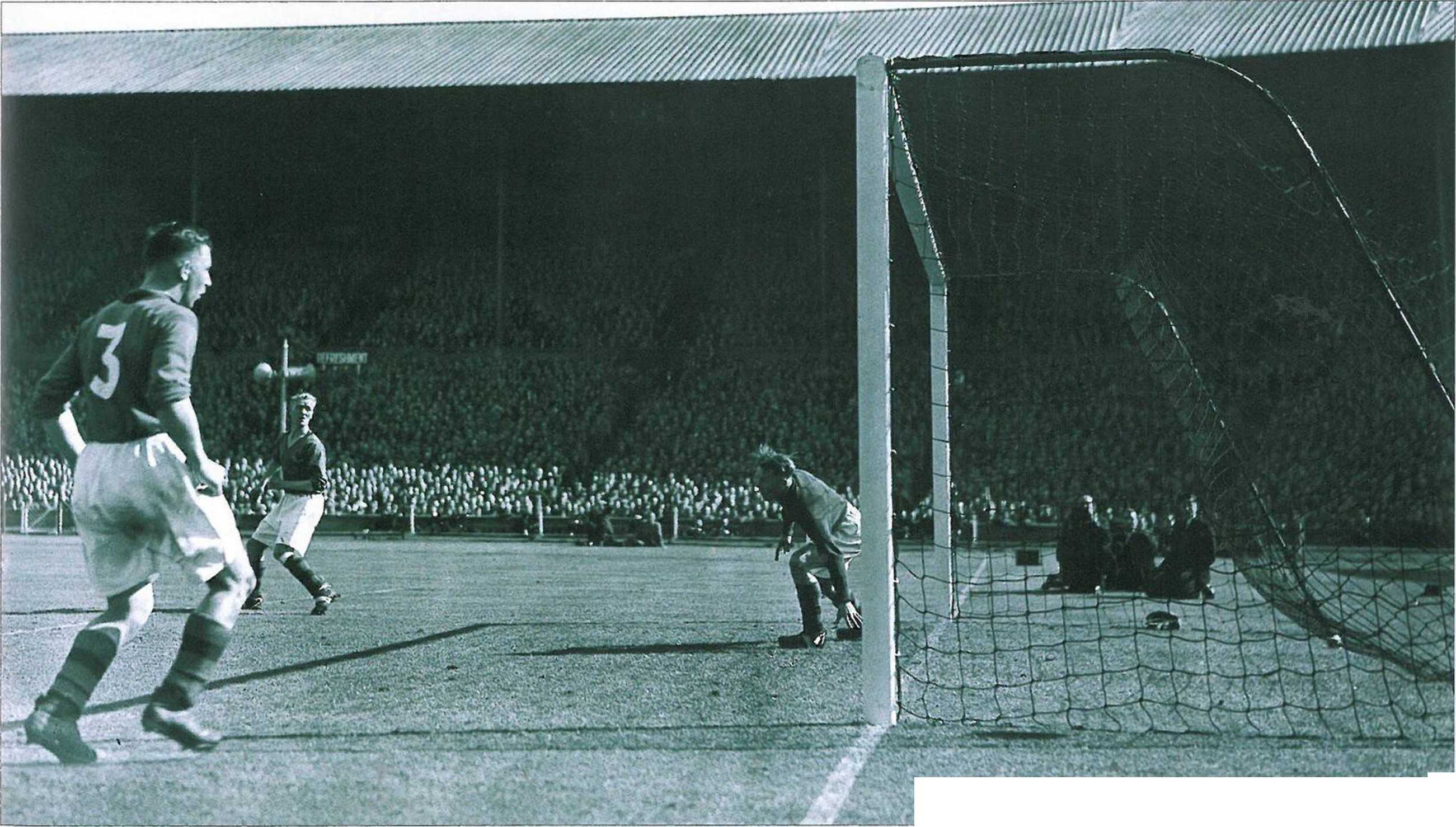
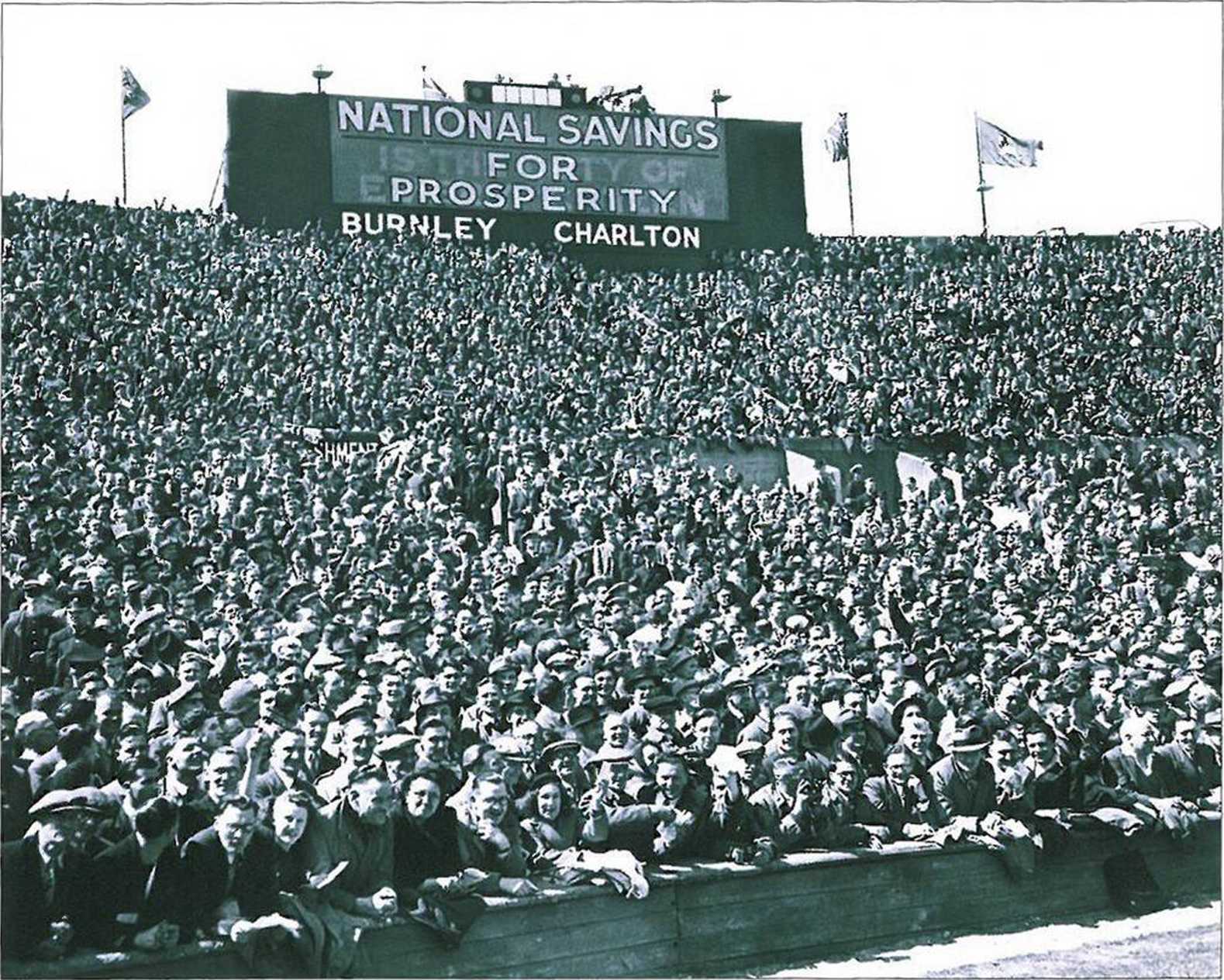
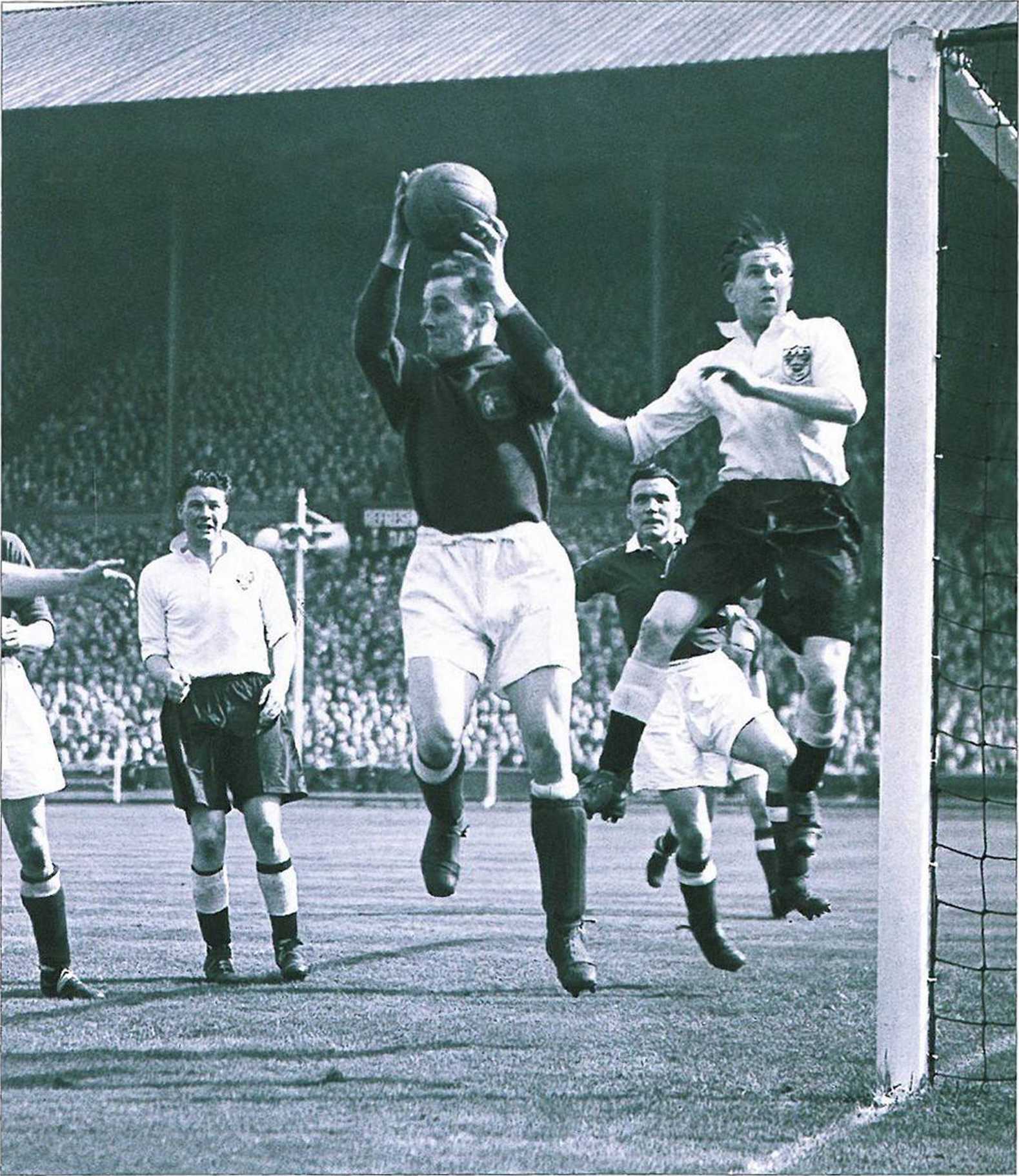
Charlton lose a Cup nnatch but make it to Wembley
Bolton were beaten by Charlton in the semi-final, and tlie London club faced Derby at Wembley. For both sides it had been a marathon campaign. Derby needed a semi-final replay to beat Birmingham, and so played ten matches to reach the final. Charlton’s run was unique. Having been beaten by Fulham in the away leg of their third-round tie, Charlton thus became the first club to reach the Cup Final having lost a match. Derby had just splashed out to sign Raich Carter from Sunderland and he helped the Rams to their first major honour. Charlton’s Bert Turner scored at both ends to take the game into extra time, when the classier Derby side scored three times without reply.
Top: Some of the 90,000 spectators at the Burnley v Charlton Cup Final in 1947. Left: Compton, the Manchester United goalkeeper, pressed by BlackpooTs Mortensen makes a spectacular save in the 1948 Final. Mortensen and the newly-acquired Stanley Matthews presented a danger to the Manchester defence, but United were triumphant winning by 4 goals to 2 in a classic final.
Opposite: Manchester United captain Johnny Carey is carried on the shoulders of his enthusiastic team-mates after receiving the FA Cup from the King. Manchester had a difficult road to the Final, facing Division One teams in every round, the 6-4 defeat of Aston Villa being one of the highlights of the 1946-7 season.
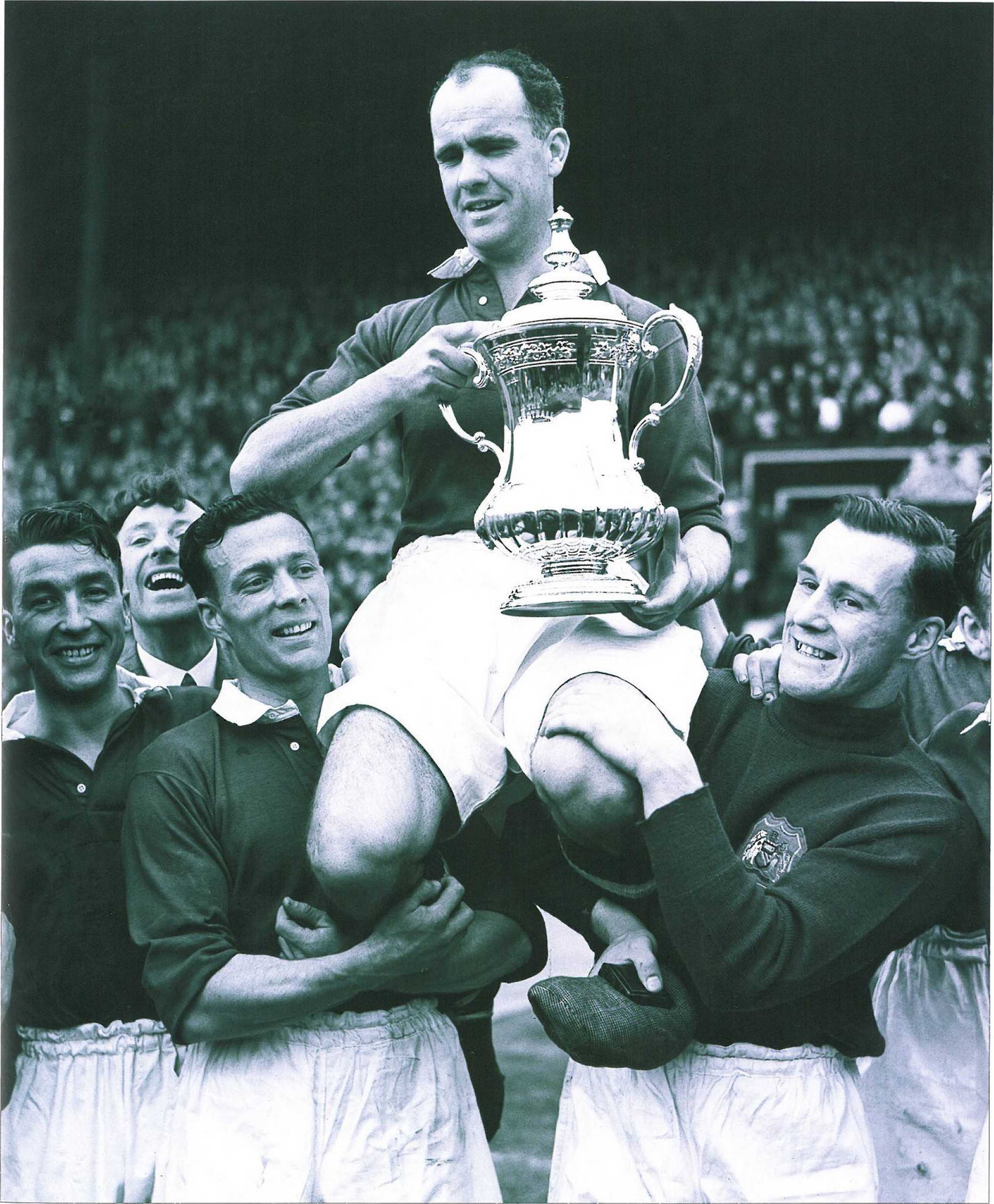

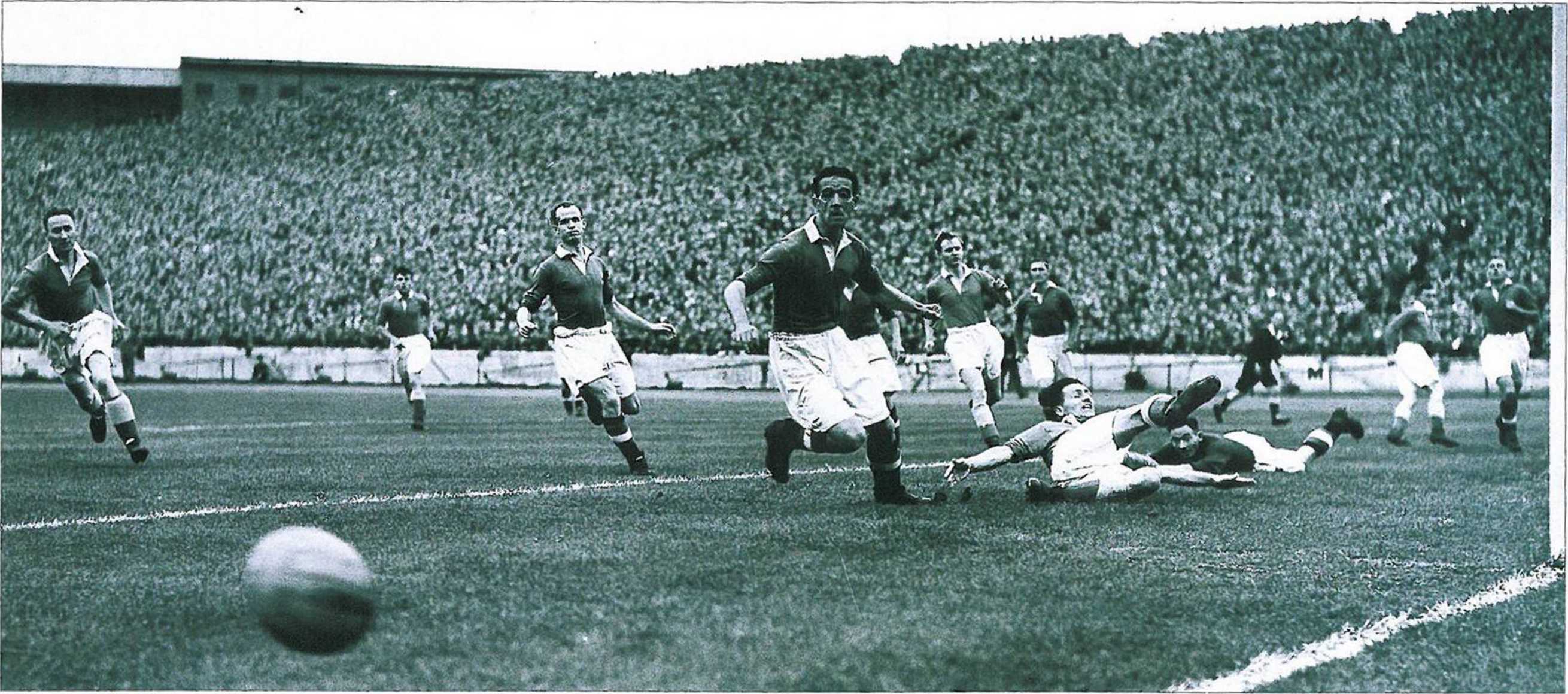




 World History
World History









